River Otter Facts
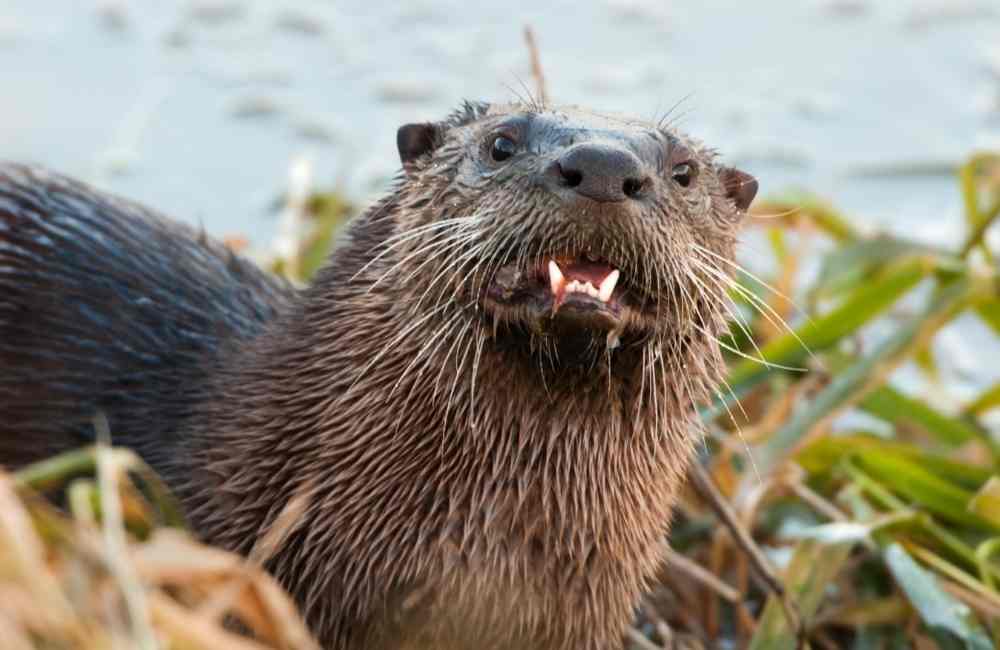
River otters are some of nature’s cutest creatures that look like the types of animals you would want to keep in your backyard as a pet! Unfortunately, these animals are not suited to living in a domestic environment because they thrive outdoors.
They are semiaquatic creatures that thrive in cold water, thanks to their thick fur, webbed feet, and flattened heads. In addition to being strong swimmers, river otters can also burrow very well in snow, and they are playful and good-natured creatures.
In this article, we’re going to give you all the necessary information about river otters. We’ll tell you about what they look like, so you know how to identify them in the wild, where they live and what they eat, and most importantly, what the difference between a river otter and a sea otter is.
We’ll also explain what their reproduction process is like and what their behavioral patterns are!
Let’s dive right in.
What do River Otters Look Like?
As we mentioned in our brief introduction, river otters have thick fur, webbed feet, and flattened heads. Let’s take a closer look at their physical characteristics.
River otters have thick, dense fur that helps keep them warm during the cold weather. Their fur is brownish-gray all over their backs, and their bellies are a lighter shade of brown.
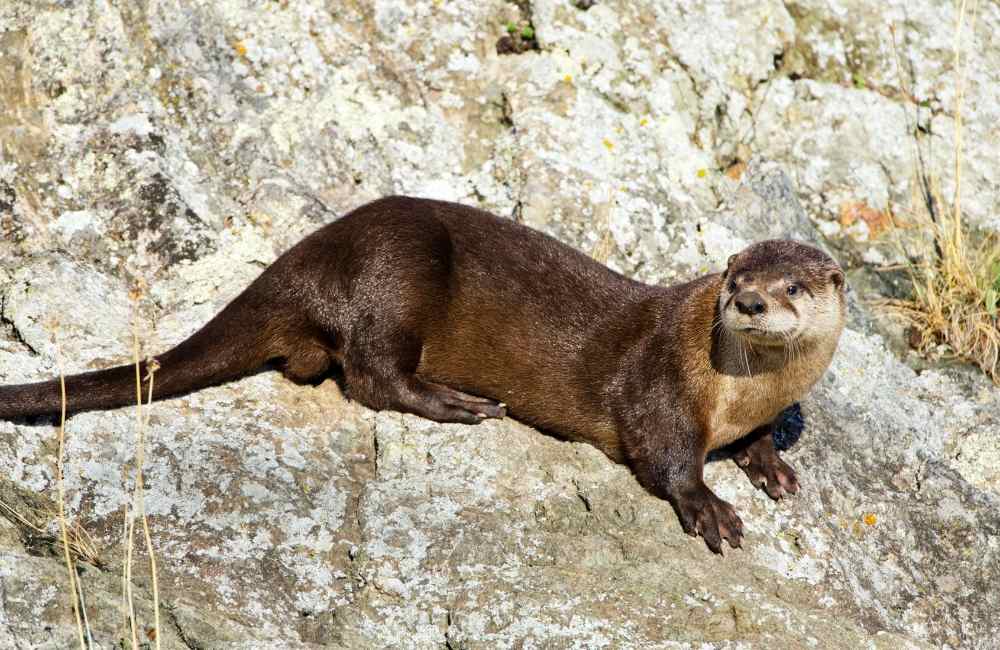
River otters also have small ears and short legs. They can close their nostrils and remain underwater for more than eight minutes at a time, which is helpful when they go hunting for food.
It’s important to note that river otters have streamlined bodies. A streamlined body means that these otters have a body whose shape tapers or narrows towards their tails. Therefore, the fact that their bodies mean that swimming is easy for them because there is no friction between their bodies and the water that they are swimming in. Their feet are webbed and clawed, thus helping them when they swim. The claws help them grasp their prey underwater.
River Otter Tail
If you’re out in the wild and you’re trying to identify a river otter, you can do so by trying to look at their tails.
River otters have long and straight tails that help them when they swim. Their tails are strong and packed with muscles. Their tails are also thick at the base but taper away from the body.
A river otter’s tail is extremely flexible. The otters use their tails to steer their bodies when they are swimming slowly. When the otters are swimming fast to catch their prey, they often use their tails as a kind of propeller to move their bodies quickly. Additionally, river otters use their tails to balance their bodies when they stand up on their hind legs.
Why do otters have whiskers?
One of the most remarkable physical characteristics of the river otter is their long whiskers. River otters use their long grey whiskers to detect when their prey is near them. Their whiskers come in handy when the water they are in is dirty or dark.
Where do River Otters live?
River otters are typically found in Northern America and Canada. You can find them all the way in the Rio Grande and Alaska.
These creatures are semi-aquatic, which means that they live in and around areas with large bodies of water. You won’t find them in warm and arid regions, such as deserts. Therefore, they live in riparian zones. A riparian zone is an area that is located in between dry land and a body of water, such as a river or lake.
The aquatic areas that river otters prefer are usually either marine or freshwater, like rivers, streams, ponds, lakes, or marshes.
River otters are more adaptable than other animals, meaning they can stand both warm and cold climates.
If you’re lucky, you might also find beavers living close to river otters!
River Otter Swimming Abilities
As a species, otters are excellent swimmers, and river otters are no different.
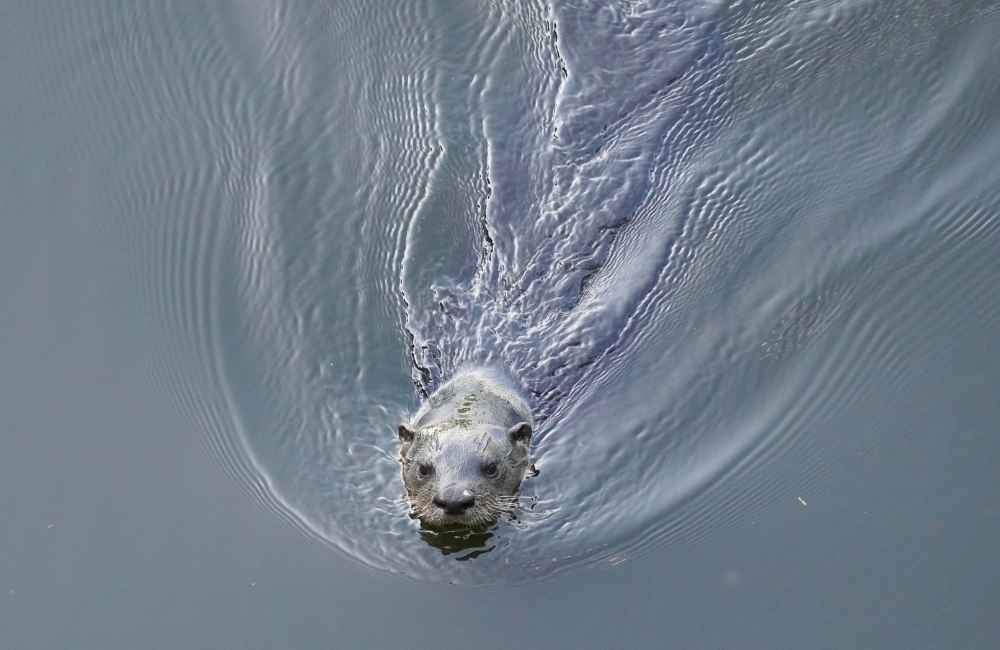
River otters swim by using their strong and muscular tails and their hind legs. When they swim fast, such as catching prey or chasing their prey, otters use their entire body and tail. Their hind legs steer their bodies, and their tails oscillate in a fluid motion.
River Otter Paws
River otters have webbed paws. They also have claws that are nonretractile. Their feet also have bare sole pads underneath them.
On Land Abilities
When river otters are on land, they often use their four legs to walk and run. They also bound and slide. When they walk, their legs follow the pattern of the left and right limbs, followed by the right and left limbs.
When river otters go bounding, they move their limbs in a parallel direction to their body. In case you didn’t know what bounding is, let us explain. Bounding is the process by which river otters lift their limbs off the ground simultaneously. When their front legs touch the ground, their back legs are lifted and eventually land in the same spot that their front legs first touched.
River otters typically slide in colder regions with snow and ice, where the ground is more even. Sliding is often more efficient for the otters because they can move their bodies a lot more quickly. When otters travel in colder areas with lots of snow and ice, they typically slide their bodies for hundreds of meters.
What do River Otters eat?
Rover otters typically eat fish of various sizes. They usually eat smaller fish when they are in the water, but if river otters catch larger fish, they usually swim to the shore to eat it. River otters also eat crustaceans like crayfish, but this depends on what region they live in.
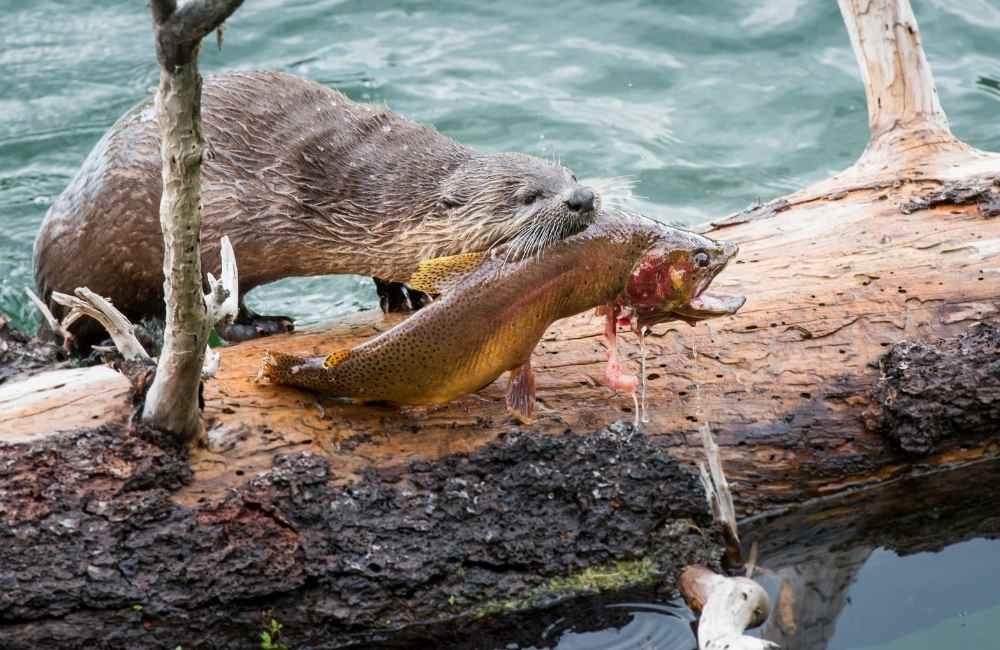
It’s important to remember that river otters eat different kinds of foods, such as reptiles, aquatic insects, small mammals, and even birds, such as ducks. They even eat reptiles, fruits, and various other amphibians.
Even though river otters are predators, they don’t attack and kill creatures larger than themselves.
As we mentioned before, river otters are more adaptable than many other animals. Therefore, if the food supply in a particular region dwindles, it isn’t uncommon for the otters to migrate to a new location with a better food supply.
How do River Otters get their food?
River otters are predators, which means that they hunt for their food.
Otters in general usually eat around 15% of their weight every day, and so, they spend many hours at a time hunting for food to eat. If a female river otter has a baby, it will spend more than five hours hunting for food, as baby otters need lots of milk to survive.
River otters typically go hunting early in the morning or late in the afternoon.
When river otters hunt in water for fish, they use their whiskers to pick up on vibrations to figure out where their prey is in the water. Since these animals love to float, they hunt for fish while they float and then use their clawed paws to grab onto prey quickly.
River Otter Teeth
Adult river otters have 36 strong teeth. They also have strong jaws that can easily grip the slippery fish that they eat.
Their canines are designed for stabbing their prey, while the teeth in their cheeks (their molars and premolars) are designed to crush their prey in their mouths.
How long do River Otters live?
River otters live for about eight to nine years. When they live in the wild, they don’t live longer than ten years. However, studies have shown that some river otters have lived longer than 21 years in captivity.
If a river otter is bred and raised in captivity, its chances of survival are higher because it is fed a steady diet and lives in an environment without any outside threats.
River Otter Behaviour
River otters are playful and lively creatures. They remain active throughout the year and do not hibernate during the winter months.
River Otter Dens
River otters live in dens that are built in the holes or burrows of other creatures. They also live in naturally constructed shelters, such as hollows or small caves on river banks or under fallen tree logs.
They line their dens or burrows with soft materials like moss, leaves, and hair.
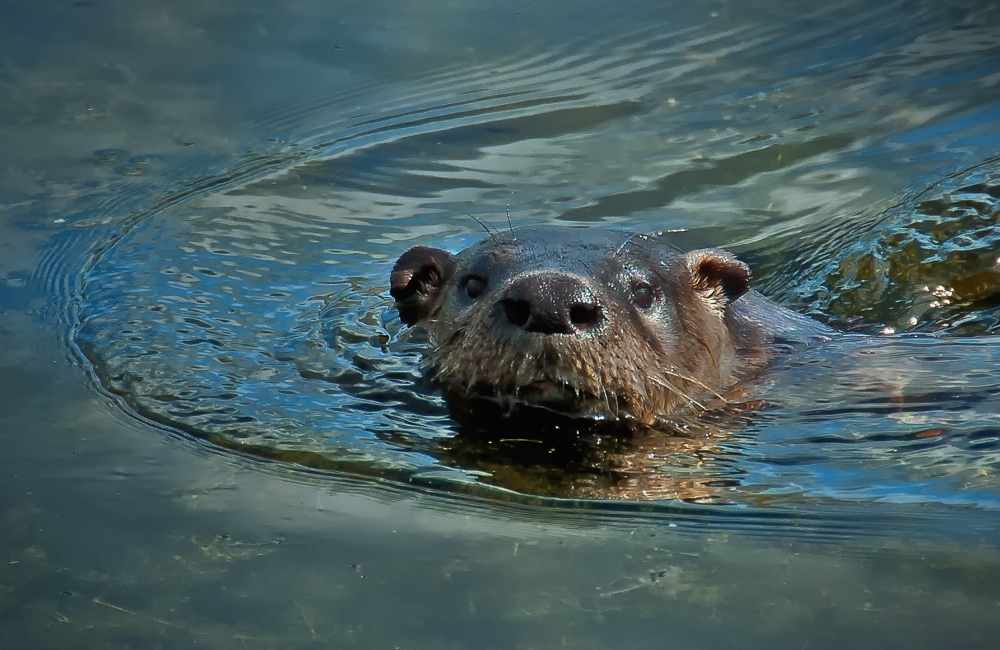
If river otters cannot find a burrow built by another creature, they will also live under a group of hollowed-out rocks. It’s important to remember that river otters prefer to live in sheltered and secluded areas. This is so that they are protected from predators like alligators or coyotes.
Communication Skills
River otters mainly communicate by using their sense of smell and sound.
When a group of river otters needs to communicate, they use scent marking to establish a territory, and they do this by using their feces and urine. In some cases, they also secrete a liquid from their anal sacs to mark their territory.
If a river otter is angry or scared, it might secrete a musky scented liquid from its scent glands.
River otters express themselves by letting out many different kinds of sounds, depending on the situation. They will let out snarls, growls, or hissing barks when they are agitated or worried. If they are hurt or in pain, they let out a shrill-sounding whistle.
However, when river otters are happy and play with each other, they usually make purring sounds like someone is chuckling or laughing softly.
When a river otter senses that there is danger nearby, it will let out a snort-like sound. It makes this sound by letting out air through its nostrils.
If a group of otters is spread out, they make chirping noises, similar to birds’ sounds.
Social Creatures
River otters are more social creatures than other carnivorous mammals like ferrets, weasels, or badgers.
Their main social group consists of a family led by an adult female otter and her children. Adult male river otters start some social groups.
Every family group has a few helpers, including other young and adult otters who don’t belong to the same family. Male river otters tend to leave family groups much more often than female groups. However, female otters will go much further away than males. Females will sometimes go more than 90km away, unlike males, who will only go around 30km away.
River otters generally travel and live in groups. They will sleep and rest in the same dens and groom each other through the process of allogrooming.
Nocturnal Animals
It’s important to remember that river otters are not strictly nocturnal but become more active and nocturnal during the year’s warmer months, especially during summer, spring, and fall. Even though they don’t hibernate during the winter, they tend to sleep through the nights and become more active during the day.
Breeding and Reproduction in River Otters
Male river otters mate with several female otters. The mating process lasts anywhere from 15-70 minutes, and it can take place either on land or in the water.
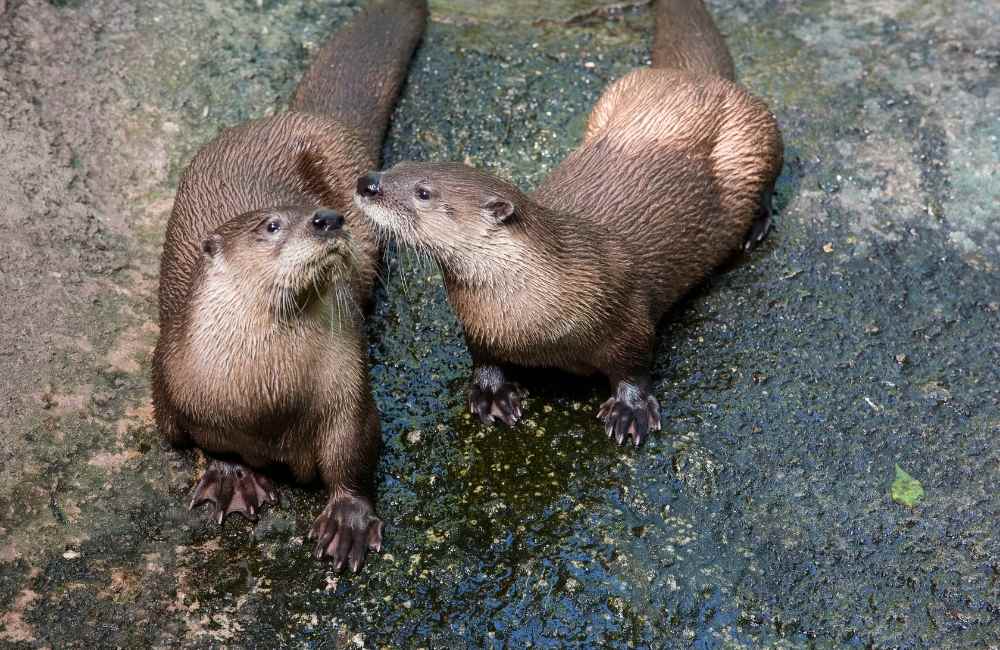
The adult male otter reaches sexual maturity at two years old, and female otters do not start reproducing until they are two years old.
The male otter will grab onto the female’s neck during the mating process by using his teeth. Female river otters caterwaul either during or after the mating process, which means that they make a shrill howling noise, just like a cat.
The gestation period for a river otter lasts about 63 days.
Baby River Otters
The average baby river otter weighs five ounces. They are born blind, toothless, covered with fur, and with properly formed claws. Baby otters start to open their eyes after 30 days. They start playing after they are one month old.
They will consume solid food only after they are two months old. By the time a baby river otter is two months old, its coat is fully grown, so it is at this time that their mothers show them how to start swimming.
Predators of River Otters
River otters must be wary of animals bigger than themselves, such as bobcats, alligators, mountain lions, and wolves. Depending on the region, they must also be mindful of black bears and coyotes as well.
Are River Otters in Danger?
No, they are not. As of 2021, the river otter population is stable and unlikely to face endangerment.
River Otters are an Indicator Species
An indicator species refers to creatures whose existences affect the environment and the health of the ecosystem. River otters eat various aquatic animals like fish, crustaceans, and amphibians, which is why their presence helps maintain balance in the ecosystem.
River Otter vs Sea Otter
Sea otters are larger than river otters, and they have two dense layers of fur to keep them warm. River otters weigh around 8kg, while sea otters can weigh up to 27kg! River otters sometimes give birth to three pups a year, but sea otters only give birth to one pup. Finally, sea otters reach sexual maturity only after they are three years old, while river otters reach sexual maturity at five years old.
Fun River Otter Facts
Here are five fun facts about river otters:
- They are shortsighted creatures.
- They can hold their breath for over seven minutes underwater.
- They always wash themselves after eating.
- They spend two-thirds of their lives on land.
- They digest their food extremely quickly.
Conclusion
In this article, we took you through tons of information about river otters, all the way from what they look like to how they reproduce and what they eat. If you ever find yourself near a river in North America, now you know how to identify a river otter!
